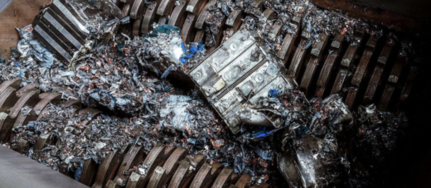Dear Reader,
There is a serious problem with lithium.
In a very big way, the problem with lithium is an analogy for most things wrong today.
The potential for greatness is there, but there are just too many inconvenient details that make the reality a chaotic mess.
Lithium can, in theory, help humanity transition into a carbon-neutral global economy.
You're already seeing evidence of this every time you get on the road.
Electric vehicles, whose numbers are expected to grow tenfold before the end of this decade, all run on lithium-ion batteries.
And what you're not seeing is even bigger.
For every solar or wind farm, gigantic lithium-ion battery arrays are sitting not too far away, soaking up the flow of electrons.
Where there is the need for distributed energy storage, be it a small residential battery in your home or a massive power storage array servicing the 100-acre solar farm you pass by on your way to work, lithium is doing the heavy lifting.
Lithium: The Achilles' Heel of Green Power Generation
Now, here’s the problem: Despite being crucial to the harnessing of renewable resources, lithium itself isn’t exactly renewable.
Anybody who’s ever owned a device whose battery performance drops off over time knows this firsthand. After several hundred charge/discharge cycles, lithium batteries begin to fail.
Once enough cells of a battery pack have failed, there is nothing that can be done. The battery needs to be removed, replaced, and disposed of — with every step of the life cycle costing energy and presenting new threats to the environment.
I’m not going to get into the specifics of how taxing lithium mining and refinement is on the environment because that’s a topic all it’s own, but here’s just one bit of trivia that should put things into perspective.
It takes more than 2,000 tons of water just to extract a single ton of lithium using traditional mining methods.
It’s disruptive to ecosystems and water tables on the production side and it’s poisonous to the environment on the disposal side.
By the year 2030, China alone will be producing more than 2 million tons of exhausted lithium-ion batteries.

Globally, less than 2% of such batteries are recycled, with the vast majority winding up in the ground.
And that’s just one side of the problem. Join Wealth Daily today for FREE. We’ll keep you on top of all the hottest investment ideas before they hit Wall Street. Become a member today, and get our latest free report: “How to Make Your Fortune in Stocks”The Best Free Investment You’ll Ever Make
It contains full details on why dividends are an amazing tool for growing your wealth.
The Chinese Have Been Planning This for Decades
Geopolitically, lithium is nothing less than a slow-moving train wreck.
The Chinese, who’ve spent the last quarter-century quietly buying up lithium production all around the world, will soon have an iron grip over the industry as a whole, leaving the rest of the world paralyzed by a functional monopoly.
So yes, lithium… is a problem.
The solution, however, is much simpler than most imagine.
Right now, there’s a company operating out of Los Angeles, County, California, that may have cracked the code for truly renewable energy storage solutions.
The system is purely mechanical and dramatically simple in design. There is no chemical energy storage to speak of.
These mechanical batteries are steel frame structures containing a series of 30 ton blocks of concrete.
When energy is pumped into the system, either from the grid or from a renewable energy generation plant, motors and pulleys lift those blocks, converting electric energy into potential energy.
Harnessing the Power of Gravity
When the power is needed, the blocks are released in a controlled descent, spinning up dynamos and converting potential energy back to electricity.
Concrete, steel, cables, and pulleys. That’s the entire recipe.
And the result is a reliable, efficient energy storage solution that can store electricity just about indefinitely.
The company behind this "gravity energy storage" constructs its facilities in modular, 10 MWh blocks, with the ultimate size and configuration dictated by specific project needs.
My colleague Jason Williams has been following this company for the last several months.
He’s certain that in the coming years, this firm could become one of the premier distributed energy storage suppliers in North America.
With all the raw materials necessary to build these giant "gravity batteries" locally sourceable, this company could easily expand its reach globally as we move toward 2030.
Now for the reason I’m writing to you about this today…
Invest in the Future of Energy Storage… At a Bargain
Over the course of the last 10 months or so, a major bloodletting within the tech sector has done a number on many very prospective stocks.
This company is no exception.
Shares can now be purchased at close to 52-week lows and more than 80% below 52-week highs.
This is despite unprecedented interest in the company's systems as well as major contracts pouring in — most notable a 440 MWh facility to be built in Nevada.
There’s a lot of information to cover for potential investors, so to help you with this, our video team recently released a presentation that will help you do your due diligence.
It’s free, access is instant, and when it’s over you’ll have all the data you need to make an informed decision.
Fortune favors the bold, Alex Koyfman His flagship service, Microcap Insider, provides market-beating insights into some of the fastest moving, highest profit-potential companies available for public trading on the U.S. and Canadian exchanges. With more than 5 years of track record to back it up, Microcap Insider is the choice for the growth-minded investor. Alex contributes his thoughts and insights regularly to Energy and Capital. To learn more about Alex, click here.



